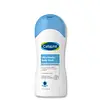Cetaphil Ultra Gentle Body Wash Versus Petal Fresh Hair ResQ Thickening Treatment Oil Control Shampoo With Biotin
What's inside
What's inside
 Key Ingredients
Key Ingredients

No key ingredients
 Benefits
Benefits

 Concerns
Concerns

 Ingredients Side-by-side
Ingredients Side-by-side

Water
Skin ConditioningGlycerin
HumectantSodium Laureth Sulfate
CleansingCocamidopropyl Betaine
CleansingDisodium Laureth Sulfosuccinate
CleansingBetaine
HumectantAloe Barbadensis Leaf Juice Powder
Skin ConditioningPanthenol
Skin ConditioningGlycol Distearate
EmollientLauryl Lactate
EmollientAcrylates/C10-30 Alkyl Acrylate Crosspolymer
Emulsion StabilisingCitric Acid
BufferingSodium Benzoate
MaskingPhenoxyethanol
PreservativeSodium Citrate
BufferingLaureth-4
EmulsifyingHydrolyzed Wheat Protein
Skin ConditioningHeliotropine
MaskingPolyquaternium-10
Sodium Hydroxide
BufferingWater, Glycerin, Sodium Laureth Sulfate, Cocamidopropyl Betaine, Disodium Laureth Sulfosuccinate, Betaine, Aloe Barbadensis Leaf Juice Powder, Panthenol, Glycol Distearate, Lauryl Lactate, Acrylates/C10-30 Alkyl Acrylate Crosspolymer, Citric Acid, Sodium Benzoate, Phenoxyethanol, Sodium Citrate, Laureth-4, Hydrolyzed Wheat Protein, Heliotropine, Polyquaternium-10, Sodium Hydroxide
Water
Skin ConditioningSodium Lauroyl Methyl Isethionate
CleansingSodium C14-16 Olefin Sulfonate
CleansingBetaine
HumectantLavandula Angustifolia Flower/Leaf/Stem Extract
MaskingMelaleuca Alternifolia Flower/Leaf/Stem Extract
Skin ConditioningCananga Odorata Flower Extract
PerfumingMentha Piperita Leaf Extract
Skin ConditioningRosmarinus Officinalis Leaf Oil
MaskingSerenoa Serrulata Fruit Extract
Skin ConditioningChamomilla Recutita Flower Extract
MaskingAloe Barbadensis Leaf Juice
Skin ConditioningEquisetum Arvense Extract
AstringentButyrospermum Parkii Butter Extract
Skin ConditioningAleurites Moluccanus Seed Extract
Skin ConditioningCamellia Sinensis Leaf Extract
AntimicrobialOlea Europaea Fruit Oil
MaskingSimmondsia Chinensis Seed Oil
EmollientCalendula Officinalis Flower Extract
MaskingPanthenol
Skin ConditioningHydroxypropyl Methylcellulose
Emulsion StabilisingMenthol
MaskingCaffeine
Skin ConditioningNiacin
SmoothingBiotin
AntiseborrhoeicPolysorbate 20
EmulsifyingCitric Acid
BufferingDehydroacetic Acid
PreservativeEthylhexylglycerin
Skin ConditioningParfum
MaskingHexyl Cinnamal
PerfumingLimonene
PerfumingWater, Sodium Lauroyl Methyl Isethionate, Sodium C14-16 Olefin Sulfonate, Betaine, Lavandula Angustifolia Flower/Leaf/Stem Extract, Melaleuca Alternifolia Flower/Leaf/Stem Extract, Cananga Odorata Flower Extract, Mentha Piperita Leaf Extract, Rosmarinus Officinalis Leaf Oil, Serenoa Serrulata Fruit Extract, Chamomilla Recutita Flower Extract, Aloe Barbadensis Leaf Juice, Equisetum Arvense Extract, Butyrospermum Parkii Butter Extract, Aleurites Moluccanus Seed Extract, Camellia Sinensis Leaf Extract, Olea Europaea Fruit Oil, Simmondsia Chinensis Seed Oil, Calendula Officinalis Flower Extract, Panthenol, Hydroxypropyl Methylcellulose, Menthol, Caffeine, Niacin, Biotin, Polysorbate 20, Citric Acid, Dehydroacetic Acid, Ethylhexylglycerin, Parfum, Hexyl Cinnamal, Limonene
Alternatives
Ingredients Explained
These ingredients are found in both products.
Ingredients higher up in an ingredient list are typically present in a larger amount.
Betaine is a common humectant (a substance that promotes retention of moisture). It's known to be gentle on the skin and can help balance hydration.
This ingredient is best for improving hydration and soothing irritated skin. Studies also show it helps even out skin tone.
Fun fact: Betaine is naturally created in the skin and body. The kind found within cosmetic products can be either plant-derived or synthetic.
Another name for betaine is trimethylglycine.
Learn more about BetaineCitric Acid is an alpha hydroxy acid (AHA) naturally found in citrus fruits like oranges, lemons, and limes.
Like other AHAs, citric acid can exfoliate skin by breaking down the bonds that hold dead skin cells together. This helps reveal smoother and brighter skin underneath.
However, this exfoliating effect only happens at high concentrations (20%) which can be hard to find in cosmetic products.
Due to this, citric acid is usually included in small amounts as a pH adjuster. This helps keep products slightly more acidic and compatible with skin's natural pH.
In skincare formulas, citric acid can:
While it can provide some skin benefits, research shows lactic acid and glycolic acid are generally more effective and less irritating exfoliants.
Most citric acid used in skincare today is made by fermenting sugars (usually from molasses). This synthetic version is identical to the natural citrus form but easier to stabilize and use in formulations.
Read more about some other popular AHA's here:
Learn more about Citric AcidPanthenol is a common ingredient that helps hydrate and soothe the skin. It is found naturally in our skin and hair.
There are two forms of panthenol: D and L.
D-panthenol is also known as dexpanthenol. Most cosmetics use dexpanthenol or a mixture of D and L-panthenol.
Panthenol is famous due to its ability to go deeper into the skin's layers. Using this ingredient has numerous pros (and no cons):
Like hyaluronic acid, panthenol is a humectant. Humectants are able to bind and hold large amounts of water to keep skin hydrated.
This ingredient works well for wound healing. It works by increasing tissue in the wound and helps close open wounds.
Once oxidized, panthenol converts to pantothenic acid. Panthothenic acid is found in all living cells.
This ingredient is also referred to as pro-vitamin B5.
Learn more about PanthenolWater. It's the most common cosmetic ingredient of all. You'll usually see it at the top of ingredient lists, meaning that it makes up the largest part of the product.
So why is it so popular? Water most often acts as a solvent - this means that it helps dissolve other ingredients into the formulation.
You'll also recognize water as that liquid we all need to stay alive. If you see this, drink a glass of water. Stay hydrated!
Learn more about Water